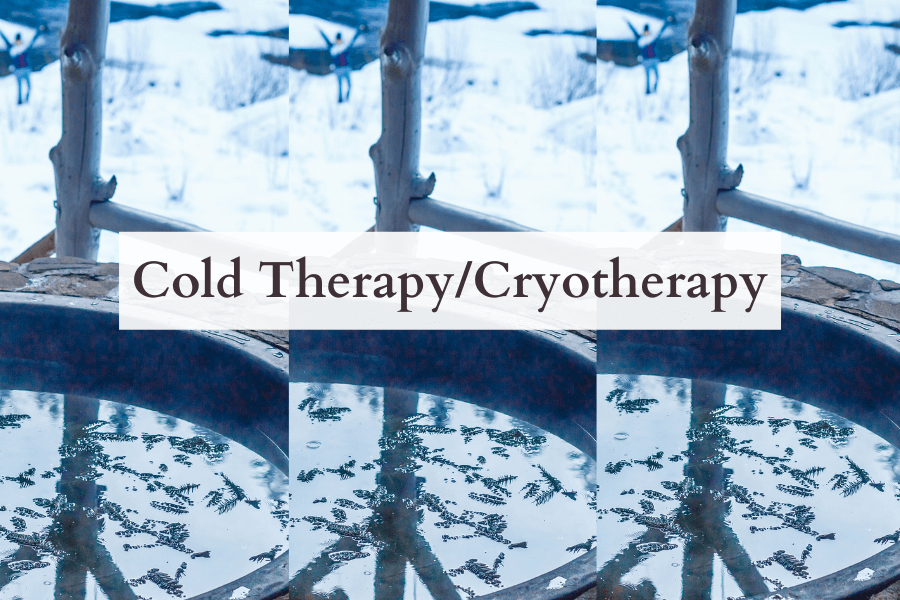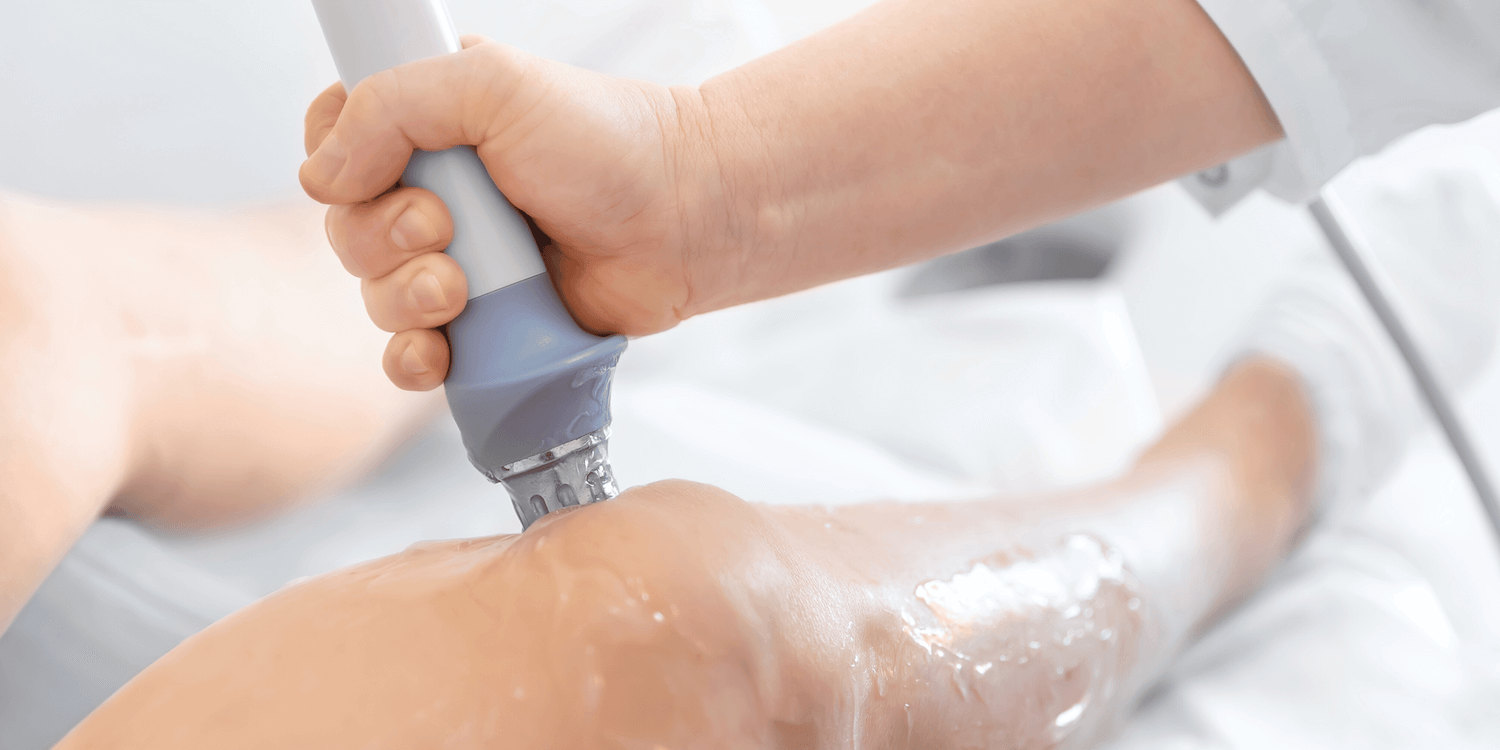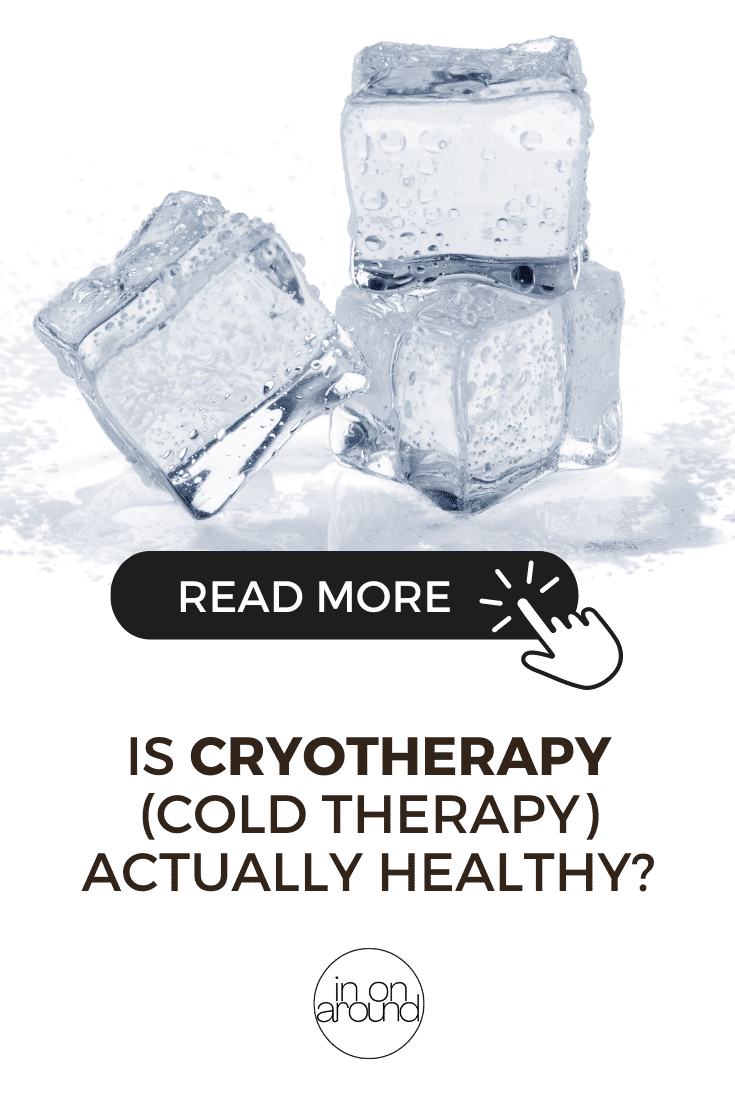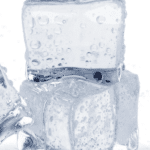Lately, cryotherapy has gained serious popularity within the health space. It’s become a common ritual amongst wellness gurus, celebrities, and athletes. But does submerging your body in a tub of super cold water actually improve your health? Can it enhance your quality of life? Are there healthy cold therapy benefits? Is it actually worth the price?
Keep reading to learn more – let’s dive in (pun intended)!

Note: This article contains affiliate links, meaning In On Around will make a small commission at no additional cost to you. This helps me maintain the site. As always, I value full transparency & only work with brands I love and trust.
What Is Cold Therapy & Cryotherapy?
Cold therapy and cryotherapy are both methods of exposing your body to extremely cold temperatures for a short period of time. It’s been used in many different cultures, like in Ancient Greece, for thousands of years!
Much of the cryotherapy craze has recently become popularized by Guinness World Record holder, Wim Hof. He’s an extreme athlete that holds the record for swimming under ice-cold water.
Cold therapy comes in many different forms. These are similar, but have distinct differences:
- Cold water baths (like ice baths)
- Cold showers
- Cold plunges (cold water immersion), like in a pool or ocean
- Direct cold therapy (localized), including using ice packs, gels, liquid nitrogen, or putting ice directly on the body (ice therapy).
- Cold chamber cryotherapy (whole-body cryotherapy or WBC), which involves entering into a very dry cold chamber.
Some forms of cryotherapy/cold exposure therapy can be localized, while others involve the whole body. Oftentimes the body is exposed to temperatures between -160 to -220 degrees Fahrenheit temperature for whole-body cryotherapy and about 50-60 degrees Fahrenheit for ice baths.
It can also be called cold exposure therapy and frost therapy. It’s intended on conditioning your mind to handle extreme circumstances with potential health or cognitive benefits.
Cryotherapy involves exposing yourself to cold temperatures.
Whole Body Cryotherapy Vs. Ice Bath
Whole-body cryotherapy and ice baths are similar, however, they accomplish cold exposure in different ways. Whole-body cryotherapy usually involves entering a one-person small cryotherapy chamber with extremely cold air. The client will usually stay in the chamber for a couple of minutes. Some people will decide to do cryotherapy daily, while others use it only sporadically. This cold air is dry (like stepping out into the tundra), so you will not get wet. Usually, these machines use liquid nitrogen, or similar chemicals, to create a very dry cold.
Ice baths, on the other hand, will immerse your body in cold, icy water and you will get wet.

How Does Cold Therapy Work?
When you’re exposed to extreme levels of cold, your blood vessels contract in a process called vasoconstriction. This process can help to push lymphatic fluid throughout your body, which is essential for removing waste. Our muscles naturally also push lymph fluid through our lymphatic system when we move & exercise.
Cold therapy adds stress to the body.
Cold therapy is intended to “shock” your body into a “fight-or-flight” response, otherwise activating your sympathetic nervous system.
This is known as hormetic stress, meaning the body gets stronger over time after exposure to certain stressors. Not all stress is bad! As the age-old saying goes, what doesn’t kill you makes your stronger.
Is Cryotherapy Good For You?
Exposure to cold in short doses has been linked to numerous health benefits:
- Reduce inflammation and swelling [1, 2, 3]
- Pain relief [6]
- Decrease in muscle spasms
- Improves immune system [7, 8, 9]
- Stimulates the lymphatic system [10]
- Improves heart rate variability [11]
- Stimulate blood flow and improve the circulatory system [12, 13]
- An improved cardiovascular circulatory system can improve heart function, cognitive behavior, metabolic health, and energy.
- Digestive system
- Reduce migraines [14]
- Assist in weight loss long-term [15, 16]
- Lower body temperature [17]
- Improve sleep [18, 19]
- Improve certain skin disorders, like eczema [20, 21]
- Promote a sense of health & wellness
- Improve mental toughness
- Cognitive improvements [22, 23, 24]
- Improve symptoms of depression and anxiety by releasing endorphins [25, 26, 27]
- More energy
It’s also been used as a form of cancer treatment, like for skin cancer, using liquid nitrogen topically or internally.
Hot And Cold Therapy
Hot and cold therapy (also known as contrast therapy) involves alternating between very hot temperatures (like in a sauna) to very cold therapy (like cryotherapy). This has been shown to help you reap the benefits of both hot & cold.
Please use caution with contrast therapy. Sometimes these extreme temperature changes can cause you to pass out (not fun)! Discuss this with your physician.
If you want to learn more about saunas, read this article: Sauna Health Benefits & Who Should Not Use A Sauna
Is Cryotherapy Painful?
Cryotherapy isn’t necessarily painful, however, it’s not usually pleasant or comfortable. The point is to push you out of your comfort zone.
Yes, it’s intimidating. It’s certainly not for everyone, but it can help you become more comfortable with the uncomfortable!
Cryotherapy can be challenging and unpleasant for some.

Cold Water Therapy Dangers
When properly performed, there are few risks. Listen to your body! If you’re pushing yourself too much, it’s time to stop.
It’s extremely important to only use cold exposure gradually. Shocking your body too quickly can cause more issues than good. Acclimatization over time is essential.
In fact, a woman in 2015 died during a cryotherapy session (where she was employed) since she was in the chamber unsupervised for over a half-hour. Use caution!
Gentle acclimatization and moderation are key.
If you improperly use cryotherapy, it can lead to:
- Hypothermia/Cold shock
- Numbness
- Skin sensitivity from the cold, like frostbite, redness, or burns
- Cardiac arrest
- Death
Those who have heart disease, a history of heart attacks, heart issues should avoid any cold water therapy since it impacts heart rate, sometimes to dangerous levels. If you suffer from anemia, seizures, claustrophobia, Raynaud’s syndrome, stiff joints, poor circulation, or other serious health conditions, it’s best to avoid cryotherapy.
Pregnant women should also avoid it. In addition, to prevent any torn muscles, make sure you warm up slowly afterward. Only use a whole body cryotherapy chamber under supervision.
If you are chronically stressed, it’s best to avoid cold therapy.
Where Do You Do Cold Therapy?
You can incorporate cold therapy right in the comfort of your own home, like in a bathtub! There are also popular free-standing cryotherapy tubs that you can buy, such as Ice Barrel or smaller portable tubs.
If you don’t have a bathtub, you can incorporate cold therapy in the shower as well! It’s best to start off very slow. Turn your water to a cold setting and stand under it for about 15 seconds. Over time, you can likely handle longer and longer periods of time, up to two minutes.
If you’re looking for whole-body cryotherapy, it’s important to only work with well-respected cryotherapy studios/spas. Do not exceed 2-3 minutes! It’s even better to use a spa that has an oxygen monitor in the room. This monitor can notify the staff if there are environmental toxins that accidentally leaked from the chamber, like nitrogen.
Cryotherapy Price
Ice baths at home are, on average, very affordable. You can just add ice to your bath!
Cryo-chambers, on the other hand, can be pricey. Usually, buying an at-home whole-body cryotherapy chamber is upwards of $30,000. Ice bath systems can range from $100-5,000+. Whole-body cryotherapy sessions at a spa usually can range between $60-100 per session (which is usually only a couple of minutes).
Cryotherapy chambers are not usually covered by insurance.
Is Whole Body Cryotherapy Worth It?
After diving into the details on whole body cryotherapy, in my opinion, WBC is not worth the price. You can reap the benefits of cryotherapy right at home, without having to spend a lot of money for a couple of minute session.
While it seems like a fun experience and likely won’t do much harm, if at all, only you can decide if the financial impact is worth it.
Cold Therapy Benefits – In Summary
Cryotherapy is a popular health trend… for good reason! It’s certainly not for the faint of heart, but the health impacts are very clear.
As always consult your doctor before giving it a try and proceed with caution.

Frequently Asked Questions
Click on the below FAQs to learn more about cold therapy benefits!
How does cold therapy work?

When you’re exposed to extreme levels of cold, your blood vessels contract in a process called vasoconstriction. This process can help to push lymphatic fluid throughout your body, which is essential for removing waste. Our muscles naturally also push lymph fluid through our lymphatic system when we move & exercise.
Is cryotherapy good for you?
How expensive is cryotherapy?
Have you tried cryotherapy?
Let me know your thoughts in the comments below!
You can watch our web story here.
xoxo,

Want to read more? Check out my other articles here!
Information from: 2 Meal Day, We Forum, PureAire, Cleveland Clinic, Home CEU, Premier Med Spa, Healthline, Sauna House, Wim Hof Method, National Eczema Association, Clean Eating Magazine, Refinery, Tony Robbins, Self Decode, Marie Claire, Camille Styles, Integris Health
Copyright In On Around LLC 2022 ©. The statements made on this website have not been evaluated by the FDA (U.S. Food & Drug Administration). They are not intended to diagnose, treat, cure, or prevent any disease. The information provided by this website should not be used as individual medical advice and you should always consult your doctor for individual recommendations and treatment. The information contained in this site is provided on an “as is” basis. Related to this site, there are no guarantees of completeness, accuracy, usefulness, or timeliness. In On Around LLC assumes no responsibility or liability for any errors or omissions in the content of this site.


